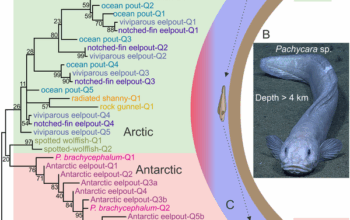Collaboration in research is not merely a trend; it is an indispensable element of the scientific endeavor. The complexities of contemporary research challenges necessitate a confluence of diverse expertise, perspectives, and methodologies. Effective collaboration can catalyze innovation, enhance productivity, and foster the cross-pollination of ideas, ultimately leading to breakthroughs in knowledge. However, locating the right collaborators can often seem an arduous task, particularly for researchers operating in increasingly specialized domains. This article examines the multifaceted approaches to finding research collaborators, emphasizing strategic networking, leveraging digital platforms, and fostering academic relationships.
1. Networking Within Academic Circles
Universities and research institutions are the primary reservoirs of intellectual capital. Attending conferences, seminars, and workshops is a quintessential strategy for establishing initial contact with potential collaborators. These gatherings not only provide the opportunity to present one’s own work but also enable researchers to engage with peers whose interests align closely with their own. To maximize these networking opportunities, researchers should prepare a succinct but comprehensive summary of their work and research interests, facilitating meaningful dialogues.
Moreover, joining relevant academic associations or professional societies can enhance visibility in specific fields. Often, these organizations host events and provide platforms for interdisciplinary collaboration. By participating actively and presenting research findings, researchers can foster relationships steeped in mutual academic interest.
2. Utilizing Digital Platforms
The digital age heralds a plethora of tools and platforms conducive to collaboration. Websites such as ResearchGate, Academia.edu, and LinkedIn serve as virtual ecosystems where researchers can showcase their work, exchange ideas, and discover others whose research focuses on complementary themes. These platforms often allow for the exploration of specific keywords and topics, making it easier to identify potential collaborators across geographic and disciplinary boundaries.
In addition, leveraging social media channels, including Twitter and niche forums, can facilitate broader connections within the academic community. Researchers can follow influential figures, engage in discussions, and participate in scholarly conversations that extend beyond their immediate academic circles. Such exposure can lead to serendipitous encounters with potential collaborators who share similar research trajectories.
3. Engaging with Interdisciplinary Initiatives
As research problems become increasingly complex, interdisciplinary collaboration has gained prominence. Engaging with interdisciplinary initiatives or centers within universities can prove fruitful in discovering collaborators from other fields. For instance, researchers specializing in computational modeling may find valuable insights from experts in biology, chemistry, or even the humanities, who can provide alternative viewpoints or methodologies. Bridging disparate disciplines often leads to innovative solutions that might remain elusive within traditional research frameworks.
Moreover, interdisciplinary collaborations frequently attract external funding, which can be particularly advantageous for researchers seeking to elevate their work. Grants that emphasize collaborative research often necessitate diverse teams, potentially broadening the scope and impact of the research produced.
4. Fostering Relationships Through Mentorship
Establishing fruitful collaborations can sometimes be expedited through the mentorship process. Senior researchers who have cultivated networks over years can introduce junior researchers to potential collaborators. Seeking a mentor within your institution or field can facilitate introductions to colleagues who might be interested in collaborative ventures. Mentorship often extends beyond immediate research goals, fostering long-term professional relationships conducive to ongoing collaboration.
Furthermore, engaging in cross-institutional mentorship programs can also widen exposure to diverse scholarly environments. As mentors guide mentees, they can stimulate networks that transcend institutional boundaries, broadening the prospect of collaborations.
5. Establishing a Collaborative Environment
Creating an environment conducive to collaboration is crucial for fostering long-lasting partnerships. Researchers should openly share resources, including datasets, research tools, and even insights obtained from independent projects. This transparency engenders trust and a sense of shared purpose, aligning motivations and elevating the collective research experience.
Regular communication is paramount; employing communication platforms, such as Slack or Microsoft Teams, can facilitate ongoing discussions and information sharing. Emphasizing collaboration in the research culture helps to mitigate isolation, encouraging more robust interactions both formally and informally.
6. Structuring Collaborative Projects
When embarking on collaborative projects, it is essential to establish clear objectives, roles, and expectations. Articulating a shared vision reinforces commitment and aligns individual motivations toward a common goal. Researchers should develop comprehensive proposals that delineate each partner’s contributions, anticipated outcomes, and potential challenges. This level of clarity can ameliorate conflicts that may arise during the course of the research, facilitating smoother teamwork.
Moreover, establishing regular meetings to assess progress and recalibrate objectives as needed can ensure that collaborators remain aligned throughout the research process. Flexibility and open-mindedness play vital roles in adapting to the dynamic nature of research collaboration.
7. Celebrating Success Together
Acknowledging and celebrating the milestones achieved during collaborative projects should not be overlooked. Whether it is publishing a paper, presenting at a conference, or attaining a funding grant, recognizing these accomplishments reinforces the collaborative bond and motivates continued partnerships. Engaging in joint celebrations fosters a sense of community and encourages participants to reflect on their shared experiences.
In conclusion, finding collaborators for research is a multifaceted endeavor involving strategic networking, effective use of digital tools, embracing interdisciplinary initiatives, and fostering an environment conducive to collaboration. By consciously implementing these strategies, researchers can engage in meaningful partnerships that enrich their work and contribute to the collective advancement of knowledge. Collaboration moves beyond mere interaction; it cultivates a communal spirit that propels the research community forward into uncharted territories.










